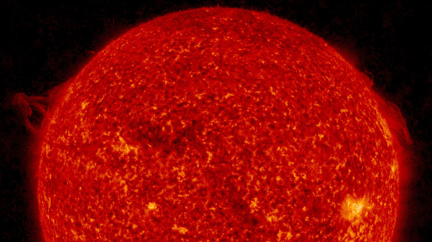Our sun and most celestial stars, began as twins, study shows
Published 12:33 pm Tuesday, June 27, 2017

- Content That Works
The sun at the center of our universe holds the solar system together and powers the seasons, ocean currents, weather and climate here on Earth. But our powerful, seemingly singular sun was born with a twin, as are most of the billions of stars like ours scattered across the Milky Way galaxy, new evidence suggests.
The sun almost certainly had a sibling when it was born 4.5 billion years ago, according to according to a new analysis by a theoretical physicist from the University of California, Berkeley, and a radio astronomer from the Smithsonian Astrophysical Observatory at Harvard University.
Trending
The new assertion is based on a radio survey of a giant molecular cloud filled with recently formed stars in the constellation Perseus, and a mathematical model that can explain the Perseus observations only if all sun-like stars are born with companions.
Astronomers have searched unsuccessfully for evidence of a companion star to our sun, dubbed Nemesis, that theoretically kicked an asteroid into Earth’s orbit, resulting in a collision and the mass extermination of the dinosaurs. It was never found.
“We are saying, yes, there probably was a Nemesis, a long time ago,” said UC Berkeley research astronomer and co-author Steven Stahler.
“We ran a series of statistical models to see if we could account for the relative populations of young single stars and binaries of all separations in the Perseus molecular cloud, and the only model that could reproduce the data was one in which all stars form initially as wide binaries,” he said. “These systems then either shrink or break apart within a million years.”
“Wide binary” refers to two stars separated by more than 500 astronomical units, or AU, where one AU is the average distance between the sun and Earth. A wide binary companion to our sun would have been 17 times farther from the sun than its most distant planet today, Neptune.
The scientists believe that after a few million years together, the sun’s sibling drifted away and mixed in with other stars in our galaxy.
Trending
The idea that all stars are born in a litter has implications beyond star formation, including the very origins of galaxies, said study author Sarah Sadavoy, a NASA Hubble fellow at the Smithsonian Astrophysical Observatory.
While astronomers have speculated about the origins of binary and multiple star systems for years and have theorized that single, sun-like stars are born as binaries, direct evidence has been scarce.
Astronomers find a greater proportion of binaries among younger stars, for reasons that are still a mystery. Further exploration of the egg-shaped cocoons of gas, called dense cores, which birth new stars may yield information about how and why wide binaries form.
“The key here is that no one looked before in a systematic way at the relation of real young stars to the clouds that spawn them,” Stahler said. “Our work is a step forward in understanding both how binaries form and also the role that binaries play in early stellar evolution.”
Stahler and Sadavoy posted their findings in April on the arXiv server. The paper has been accepted for publication in the Monthly Notices of the Royal Astronomical Society.
© Content That Works


